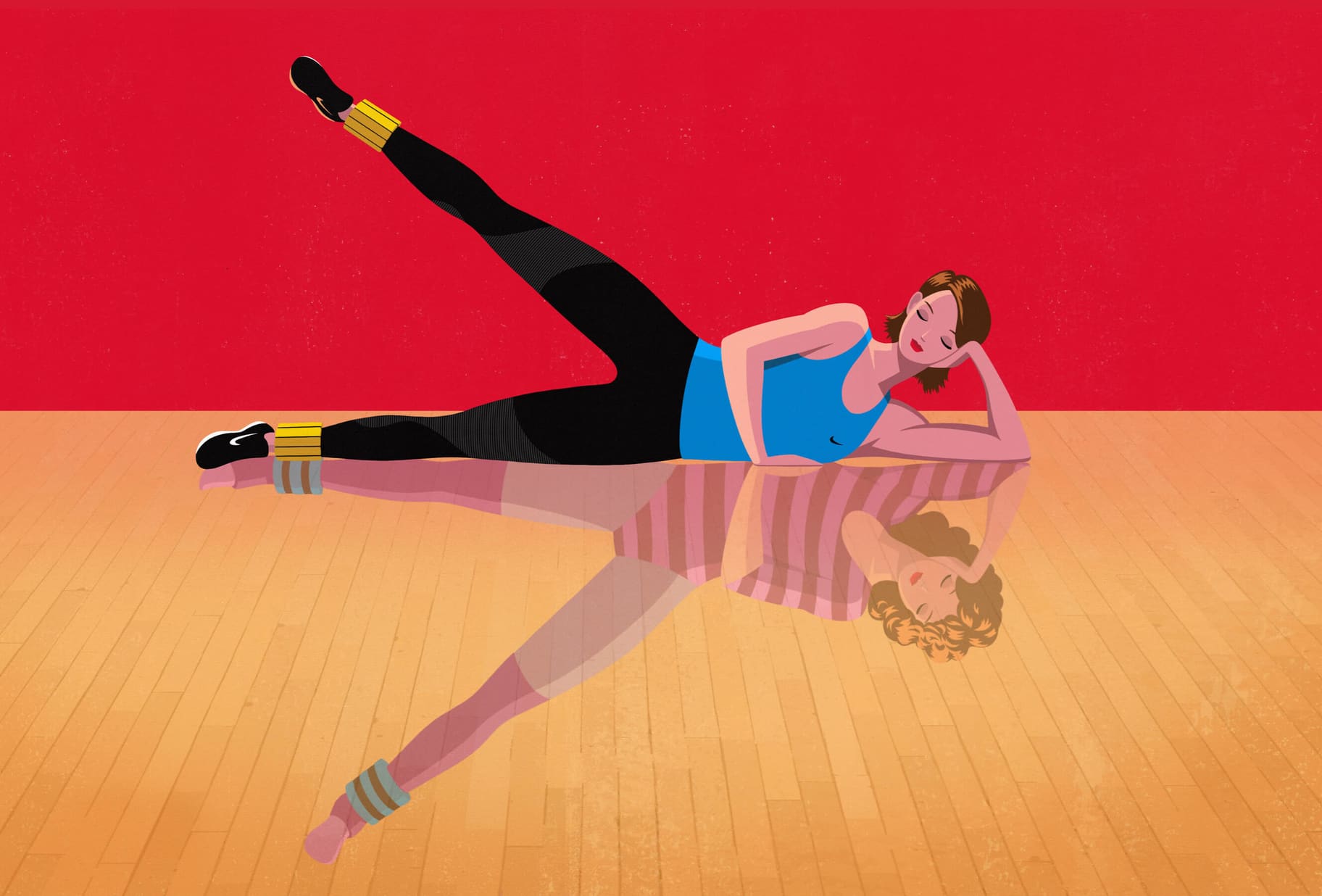The Return of the Ankle Weight
Coaching
A new generation is betting this '80s fitness accessory still delivers major benefits. But can it really take your workout to the next level?

Once upon a time, women would wear elastane thong leotards and do step aerobics with a sweatband on their head and light weights strapped around their ankles. That time was the '80s. Now, four decades later, one of those trends is making a comeback.
Ankle weights have been spotted all over social media recently. If you find yourself influenced to grapevine your way over to a store (online or not) to try out the trend, first take a minute to explore whether ankle weights are right for your workouts.
Figuring Out the Fad
Ankle weights are exactly what they sound like: small cast-iron weights, ranging from 0.5 to five kilogrammes, typically covered in a silicone or neoprene skin so you can wrap and strap them around your ankles. In some cases, they even do double duty as chunky jewellery. (One company that's recently gone viral for selling ankle weights worn as accessories has seen a 1,400% increase in searches this year.)
Why the sudden resurgence? These days, when gym access is limited and at-home weights are hard to find, "people are getting creative in finding different ways to add resistance", says Rachel Straub, a certified strength and conditioning specialist and exercise physiologist at the University of Southern California Musculoskeletal Biomechanics Research Laboratory.
This creativity has the potential to pay off. In a study published in the Journal of Taibah University Medical Sciences, people wore 0.5-kilogramme ankle and wrist weights (so two kilogrammes in total) three times a week for 20 minutes while they went about their daily activities, like walking and doing chores, over six months. The result: Their waist size and body fat decreased slightly, while their muscle mass increased by 0.75%. That's not much, but considering the participants did no other exercise, it's not nothing either.
These days, when gym access is limited and at-home weights are hard to find, "people are getting creative in finding different ways to add resistance".
Rachel Straub
Certified Strength and Conditioning Specialist and Exercise Physiologist at the University of Southern California Musculoskeletal Biomechanics Research Laboratory
Even the tiniest extra load can up the intensity of movement, explains Straub, who wasn't affiliated with the study. And when that load—light as it may be—is locked in near your ankle joint, it throws constant force on all the leg muscles above it, she says, which can help you burn more calories and strengthen muscle tissue. The same goes for wearing wrist weights and challenging your arm musculature.
The Real Weight of the Ankle Weight
Don't abandon your normal lifting routine just to go retro: wearing single-digit weights on your ankles all day isn't going to have a significant impact on your composition or performance. Ankle weights are more like resistance bands than a set of dumbbells, says Nike Master Trainer Kirsty Godso. Helpful, but you still need the challenge of heavier loads to kick-start the muscle-building process.
What ankle weights do offer is a chance to "fine-tune the way you work your body", says Godso. "When you perform moves in a very slow, very thoughtful way with even a light weight, it can lead to great results in strength, body awareness and muscular endurance".
If you've ever taken a Pilates or barre class, you're familiar with moving this way: slowly, thoughtfully, with control. The challenge in these workouts often comes from working one side or area of your body with slow, seemingly endless reps until the muscles there, even ones you'd never felt before, are completely fatigued, says Godso. Similarly, training one leg at a time with an ankle weight (picture lying on your side, lifting one ankle-weighted straight leg) can activate those smaller muscles, she says, because they all jump in to move the load and stabilise your body when your bigger muscles tire. Your core has to fight a bit harder than usual to keep your body stable too, adds Straub.
How to Train with the Trend
Ankle weights can be great for squeezing a little more out of an otherwise low-impact bodyweight strength-training workout, says Godso. Try using them for exercises like single-leg glute bridges, side-lying leg circles and leg lifts from tabletop position. But again, perform each rep slowly, thoughtfully and with control, and do only as many reps as your muscles can manage with good form.
What you don't want to do: Stick on ankle weights that are so heavy they compromise your form, says Straub, or mix them into cardio or even HIIT workouts, says Godso. "The whole purpose of those is to move as fast as you can to spike your heart rate", she says. "Carrying a weight along while you do that can hinder your form, increasing your risk of injury, and defeat the purpose".
All that said, if you do decide to give ankle weights a try, know that the neon bodysuit is optional.

Take It Further
For more expert-backed guidance on recovery, as well as mindset, movement, nutrition and sleep, check out the Nike Training Club App.
Take It Further
For more expert-backed guidance on recovery, as well as mindset, movement, nutrition and sleep, check out the Nike Training Club App.